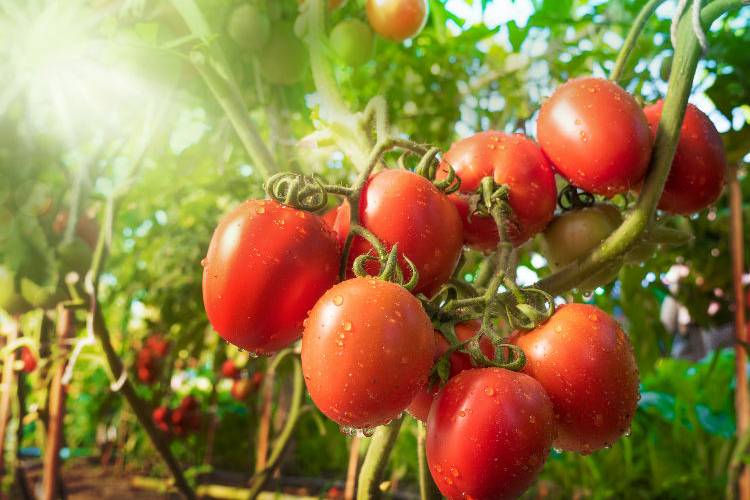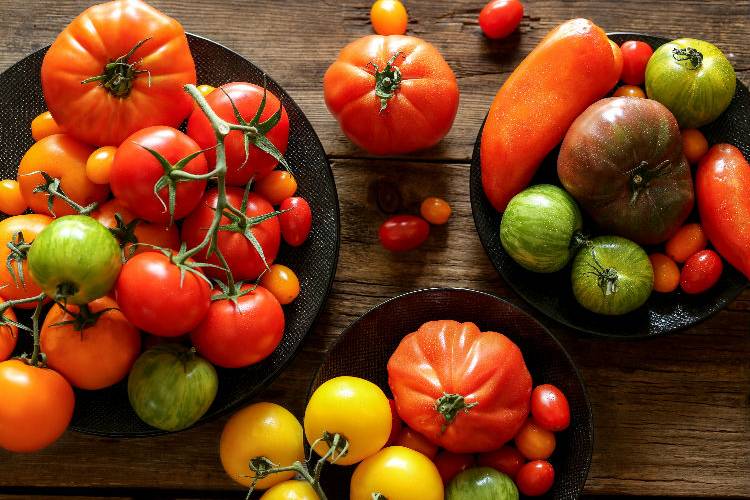A guide to which tomato is best for each dish
Tomatoes are for summer. Although we can buy them all year round, it is in summer when they are at their best. In less than a month, this food will start its prime season, with over 60 different varieties on the market. But do you know which type of tomato is right for each dish?
TRIED AND TESTED
Share

Although the tomato is now an integral part of our diet, this was not always the case. This fruit is native to America. It is believed that it was eaten for the first time in Mexico about 2,500 years ago. The Aztecs knew it as xīctomatl, which meant fruit with a belly button. It was the Spanish conquistadors who brought the first tomatoes to Europe in the Sixteenth century and distributed them among the colonies of the Caribbean and the Philippines, from where they were passed on to Asia. Tomato sauce did not come until two centuries later. Today, the tomato is grown and eaten all over the world.
Tomato is one of the healthiest foods that exist and that has fewest calories
Tomato is one of the healthiest foods that exist and that has fewest calories. 100 grams of tomato provide only 18 kcal. In addition, it is rich in lycopene, an antioxidant substance that can help prevent cell damage, thus exercising a protective effect against a large number of heart problems. It has lots of vitamins (A, B, and C), and also minerals such as potassium, phosphorus, magnesium and calcium, among many others. It is one of the main ingredients in an infinity of universally loved dishes (although many are of Italian origin), like pizza or Bolognese sauce. In Spanish cuisine it’s widely used, for making sauces, in salads, or in cold soups as gazpacho.

VARIETIES OF TOMATO
• Cherry: these small tomatoes are perfect for salads and garnishes. They can be cultivated in pots on a terrace or in a reduced space. Within this variety, there are several types such as yellow, red, pear, orange, pink and so on.
• Valencian: this is one of the best known and appreciated. They are large tomatoes, which can exceed 180 grams. Aromatic and with an intense flavour, their fleshy, juicy texture makes them ideal for eating raw, especially in salads. Among the Valencians, the tomato from El Perelló is one that stands out. Its production is generally between the months of May and August.
• Muchamiel: it is one of the most emblematic and well-knownvarieties from the province of Alicante, where it originates. It shares somecharacteristics with the Valencian. These are medium-sized tomatoes, with athin skin and a colour that ranges from green to red as they mature. The flavouris smooth, with a fleshy, sweet pulp.
• Raf: this variety is obtained from artificial selection fromthe traditional Marmande tomatoes. They are mainly cultivated in Almeria, inthe area of Níjar, near the Natural Park of Cabo de Gata, as its saline watersand arid lands give them a unique flavour. Their shape and colour are verycharacteristic: they are irregular in shape with deep grooves ending in the centre,flattened at the ends. They are an intense green colour, with very dark touchesnear the top. Compact in texture, theyare fleshy, with a rosy pulp. Raf tomatoes have a very sweet flavour with anacid touch that enhances their taste.
• Kumato®: this is a hybrid variety of black tomato that wasobtained by crossing different varieties in the traditional way. It is nottransgenic. It has a rounded shape and is sweet. The Kumato® ripens from theinside, so that the flesh remains crisp even in a mature state, making itperfect for salads. Its ideal point of ripeness is when it turns a reddish-browncolour with green shades around the stem. If used for gazpacho, it will not benecessary to add vinegar, due to the acidity that the tomato itself brings.
• Montserrat: much appreciated in Catalonia, this is one of the bestvarieties to make stuffed tomatoes because they are practically hollow. Thesetomatoes were about to disappear since other varieties were more productive,but a few decades ago they began to recover. At present, they are produced inmany Catalan regions.
• Beef heart: large tomato with a very fine skin. It receives this name because of its generous size and shape. A tomato of this variety can weigh up to half a kilo, although the average weight is 300 grams. They have almost no seeds. They are tasty, with abundant, fleshy pulp, lacking in acidity. They are perfect for both salads and for stuffing. They are often used to make the Italian Capresse salad.
• Canary tomato: its origin was related to the excellent weather in the Canaries. It was aBriton who began to grow this tomato in 1885 and his compatriots, settled onthe islands, began to commercialise it. It is a round tomato and very smooth, witha high quality, intense red colour. The skin is hard and has few seeds and afleshy pulp. Although 'canary' tomato is the most common tomato variety, it isalso called Daniela because it is the commonest variety of Canary Islandstomato.
• Pear tomato: pulpy fleshy, slightly acidic, spherical and flattened(oval). It has a sweet, very aromatic flavour that makes it ideal for saucesand preserves, once it is ripe. It is also often used dehydrated and eatengrated with bread. We can find it all year round in our local supermarkets.
• Vine tomatoes: can be kept fresh for several months after beingpicked from the bush. The Provinces of Valencian and Catalonia are the majorproducers of this variety that is used especially for the typical ‘bread with gratedtomato’. It is mostly eaten in winter. To keep them at their best, hang them ina cool, dry place once gathered.






